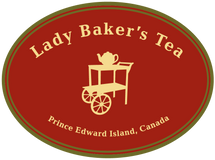Tea Sommelier, Anyone?
There are eight six-week modules to the Tea Sommelier program offered by the Tea Academy of The Tea and Herbal Association of Canada. I have just concluded the fifth through their online school. One thing I have learned for sure is that once you start it is best to keep going without a break between modules. The knowledge you gain from the cupping of different types of tea comes with practice and patience. The more you do it, the more sense it makes and the more your taste buds surprise you.
I thought it would be fun to share with you some tidbits of tea knowledge from time to time.
Here are some 'Did You Knows?'
Pekoe is pronounced peck-o and it refers to the top and unopened bud on the plant.
Pluck is not only a verb, but it is also a noun referring to the number of leaves that are to be picked on a certain day. For example P+1 or the Imperial Pluck is the bud and one leaf just below it. P+2 or the Fine Pluck is the bud and 2 leaves below it. P+3 or the Medium pluck is bud and 3 leaves. Okay, folks, we're heading to the fields to do an Imperial Pluck today which by the way makes for a superior tea.
White tea is the bud only or one bud and a leaf, briefly withered and dried. That's it; almost no processing. It's very delicate tasting.
Japan's green tea production is almost entirely mechanized from pluck to package. It is brighter green in infusion because it is steam-fired to stop the oxidation. Think of broccoli after you steam it.
China's green tea is more of a brown-green when infused because the leaves are pan-fired to stop the oxidation. Think of broccoli after roasting it!
Tea has volatile components and for this reason, a better tasting cup is one that has been covered while steeping. So when you sit in a restaurant and your tea is brought to you with the sachet in your cup, it would be even tastier if you put a lid on it somehow while it steeps!
Matcha is powdered green tea, but not all powdered green tea is matcha. It is matcha if it has been shade grown for about 20 days before plucking and is processed according to standard guidelines which include de-veining. It's a long, slow process and that's one reason it is so expensive.
We've all heard how our ancestors (and not that far back) put the tea on the back of the stove and let it boil its heart out! Ooh that was a bitter cup! I know we've been over this before but I wanted to add to this blog just in case you need a reminder, the steps to making a good cup of tea.
I look forward to sharing more with you in the future of this amazing tea journey!
The Art of Creating a Perfect Cup of Tea
Tea Type Water Temperature Steeping Time
White 80°C / 185°F 2-5 min
Green 80°C / 185°F 1-3 min
Oolong 80°C / 185°F 2-3 min
Black 100°C / 212°F 4 min
Herbal 100°C / 212°F 3-6 min
Start with fresh-drawn cold water and bring to a rolling boil and let sit to temperature suggested above
Warm the cup or teapot
Use one teaspoonful of loose tea or one teabag per cup (6 oz.) of water
When the water is at the correct temperature, take the kettle to the warmed teapot and pour over the tea
Cover and let steep for times suggested above
Strain tea or remove the teabag(s) & Enjoy!


Leave a comment
Please note, comments must be approved before they are published